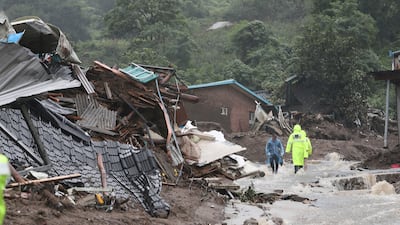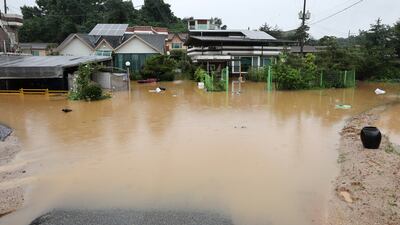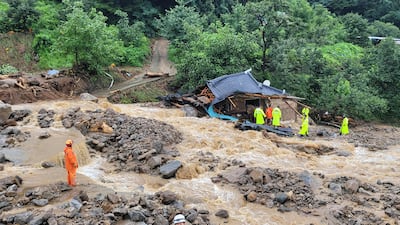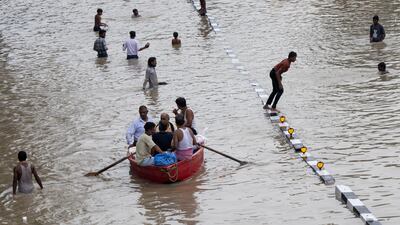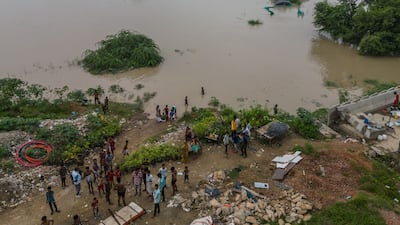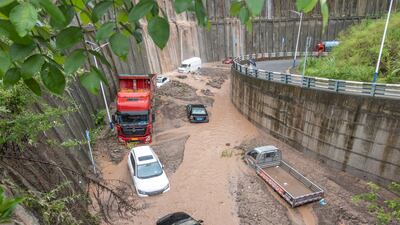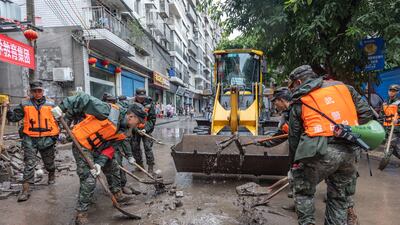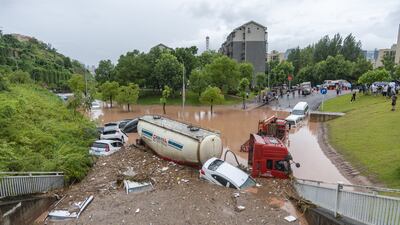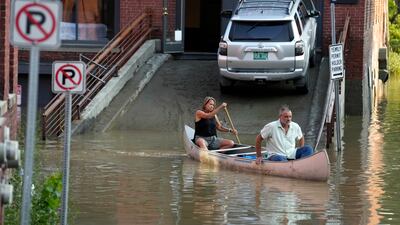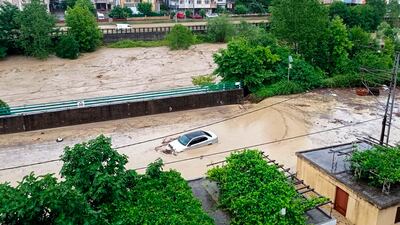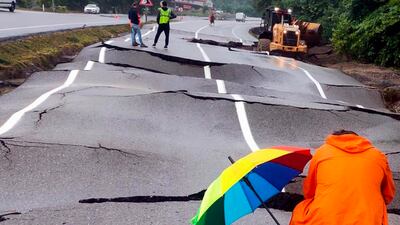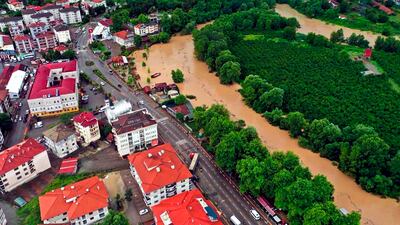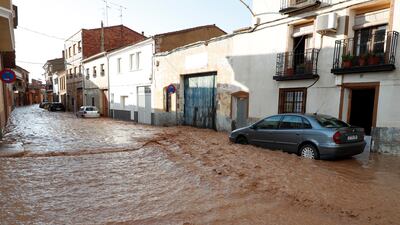Asian nations battled severe flooding this week amid heavy rain.
In South Korea, 22 people died and thousands were evacuated as rapid rainfall sparked landslides, Japan's Yonhap New Agency reported.
The central province of Chungcheong and parts of nearby North Jeolla were inundated with around 100mm per hour on Friday.
More than 4,000 in the capital Seoul were left without power.
The rain also caused a large dam to spill into nearby areas in North Chungcheong province and submerge villages.
The Yamuna River running through India's capital Dehli reached a record level, with more rain forecast for Saturday.
The river reached a width of 208.66 metres late on Thursday, surpassing the previous mark of 207.49 metres, reached in 1978. The flows threatened low-lying neighbourhoods in the megacity of more than 20 million people.
Delhi's Chief Minister Arvind Kejriwal said that state personnel and army engineers were working to “ensure that the flood waters do not enter the [main areas of the] city”, but warned that more rain was forecast for Saturday.
Upstream from Delhi, at least 90 people have died in Punjab, Himachal Pradesh, Uttarakhand and Haryana in recent days, according to local media reports.
Tens of thousands of people have been stranded, with key roads, power lines and communication networks disrupted in the regions because of landslides and floods.
Neighbouring Pakistan, struck by devastating floods last year which killed 1,700 and displaced millions, evacuated 14,000 people this week as monsoon season hit.
More than 90 people have been killed in flood-related incidents since the beginning of the season in June.
Mohsin Naqvi, a top official in eastern Punjab province, tweeted on Friday that he had visited flood-hit areas.
The evacuations began earlier this week after India diverted waters from dams into the Ravi River, which flows into Pakistan. An overflowing Sutlej River has also inundated villages in various parts of the province.
The national weather agency says rains will continue this week in the south-western Balochistan and southern Sindh provinces.
Monsoon season brings South Asia around 80 per cent of its annual rainfall, which is key to both agriculture and the livelihoods of millions, but causes natural disasters every year.
The inundation of so many parts of Asia and elsewhere came after parts of the globe experienced record temperatures.
Climate change woes

Last month was declared the hottest June on record by the US space agency Nasa and the EU's Copernicus Climate Change Service. Climate scientists say global warming can bring heavier and more frequent rainfall.
Greece closed its top tourist attraction, the Acropolis, during the hottest hours on Friday as temperatures climbed to 40°C in Athens.
On the Italian islands of Sicily and Sardinia temperatures hit 48°C, “potentially the hottest temperatures ever recorded in Europe”, the European Space Agency said.
Morocco's meteorological service issued an extreme heat red alert for southern parts of the country.
Some regions of China, including the capital Beijing, are experiencing soaring temperatures and a major power company said generation hit a record high on Monday.
Parts of eastern Japan are also expected to reach 38°C to 39°C on Sunday and Monday, with Japan's meteorological agency warning temperatures could reach previous records.
A recent study estimates over 61,000 people died from heat during Europe's record-breaking summer last year.
A contributing factor to the higher temperatures this year may be the climate pattern known as El Nino.
El Nino events, which occur every two to seven years, are marked by warmer-than-average sea surface temperatures in the central and eastern Pacific near the Equator, and last between nine and 12 months.
